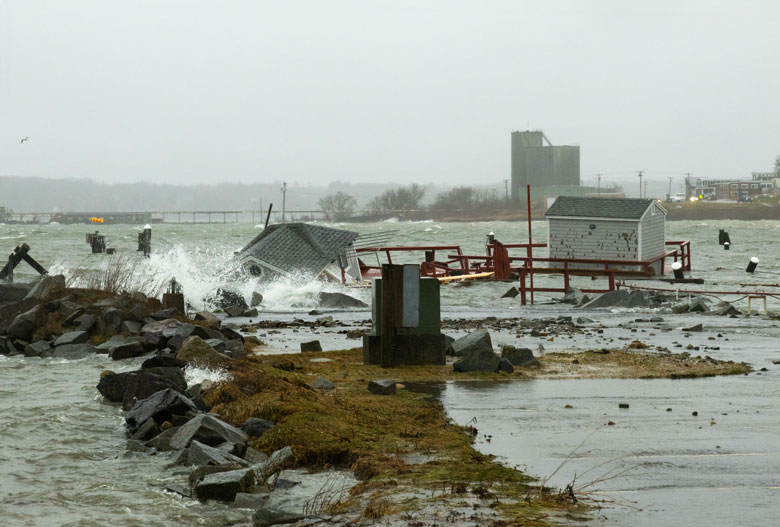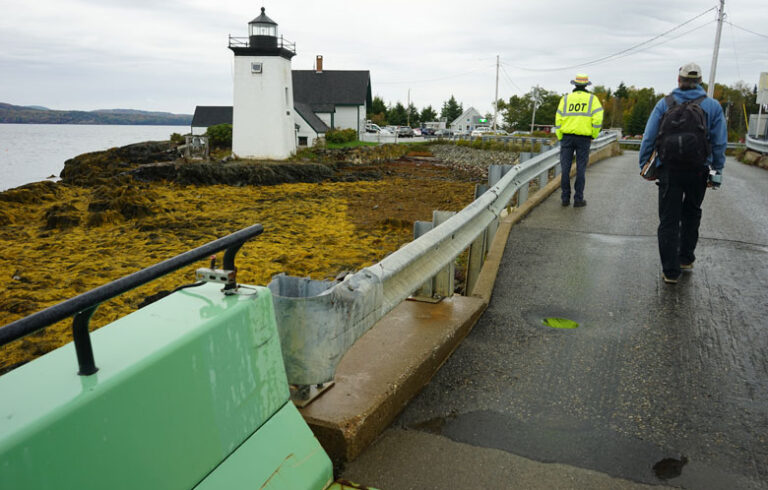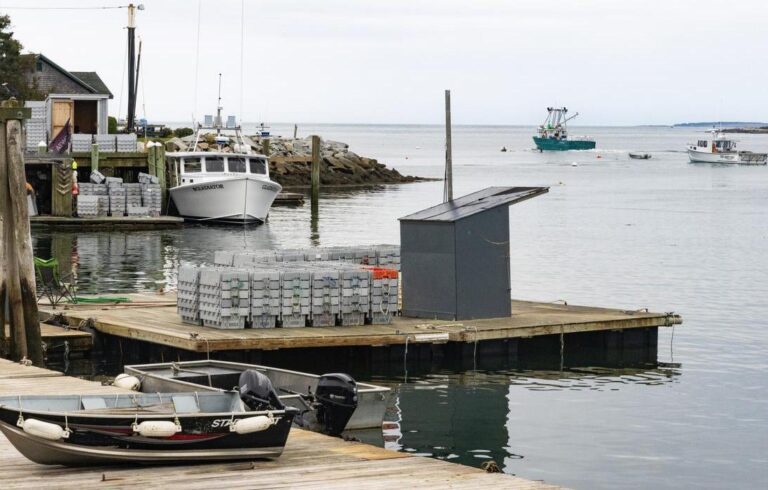Some local leaders are crediting municipal sea level rise and climate resilence committees for giving their communities a head start in the race for millions of federal, state, and private dollars that are now heading for Maine’s coast.
“It’s really important to have this town infrastructure in place,” said Bill Zoellick, who chairs Gouldsboro’s Coastal Resilience Committee. “In most communities of our size, there’s absolutely no way they can have a paid planner on staff… so there’s no employee who can write grant proposals, track opportunities, and manage the follow-up reporting that’s required.”
Zoellick’s committee began as an ad hoc group of volunteers who built consensus around the preservation of shore access, clam flat restoration, and building more resilient infrastructure. After some early success securing state grants for their projects, the town “suddenly had the energy to bring this ad hoc group into its committee structure,” Zoellick said. And that, in turn, has increased the towns’s capacity to work with regional partners and win more state funding.
Coastal communities with strong resilience committees like Gouldsboro and Vinalhaven will be well-positioned for grants…
In early July, Zoellick announced two $50,000 grants for Gouldsboro to study the town’s vulnerabilities to rapidly rising sea levels and begin planning mitigation efforts. The first, a Community Action grant from Maine’s Community Resilience Partnership Program, will fund a project to identify new road designs for Corea Harbor—including a causeway that, by Zoellick’s estimate, carries about $200,000 in lobsters, other seafood, bait and supplies every week.
The second, from Department of Agriculture, Conservation and Forestry’s (DACF) Municipal Planning Assistance Program, will be used to inventory and assess vulnerable infrastructure in three other Gouldsboro harbors that are home to 47 commercial fishing vessels.
Some grant categories are now explicitly tied to participation in the state’s Community Resilience Partnership Program, which requires a municipal climate resilience committee. That may explain the program’s rapid growth, which added 52 new partners in the first half of 2024. But even when such committees are not explicitly required for grants, their presence provides towns with the capacity and commitment that state agencies look for when awarding funds.
In Vinalhaven, Town Manager Marjorie Stratton said the involvement of the community’s Sea Level Rise and Climate Committee was valuable in winning $50,000 to assess vulnerability and begin engineering and cost estimates for the reconstruction of a pier, floating docks, and wave attenuator/crib damaged in the January storms.
“It illustrates the greater public purpose of these projects,” Stratton said of the committee, which dates back to 2016. “There seems to be a lot of resiliency funding for working waterfronts, and this infrastructure has been on our radar for years, so their work as a partner was important. And the more partners you have on a grant, the better.”
Averi Varney is executive director of the Hancock County Planning Commission, which won a Coastal Community Grant for a project it calls “Climate Ready Communities: A Vulnerability Assessment and Adaptation Plan for Coastal Sullivan and Sorrento.” That project, Varney said, provides joint flooding and sea-level rise vulnerability assessments and adaptation plans for the two towns.
“Low-resource communities struggle with staff and funding already,” Varney pointed out. “Then they get hit with those winter storms—it’s hard to imagine how badly they got hurt. Ocean Avenue in Sorrento, for example, just got destroyed. There’s a lot of work to be done, and not always enough people to do it.”
Varney said one of her organization’s goals is to enroll more communities like Sullivan, Sorrento, and the island community of Frenchboro into the state’s Community Resilience Partnership Program.
“The idea is to build more structure and capacity in these small towns as a first step,” she explained. “Gouldsboro is fortunate to have a Bill Zoellick, who has a background in grant writing. Not everyone has a Bill.”
Zoellick says a well-functioning resilience committee may, in some ways, be the most important piece of “infrastructure” in a small coastal community. That’s because the work it engages in is the precursor to the more expensive engineering tasks to come—raising roads, realigning causeways, and building wharves and piers higher and stronger than in the past.
For instance, his committee has used a town drone to fly over Gouldsboro’s wharves and waterfront to create 3D models of the infrastructure, which helps residents, fishermen, officials, and engineers visualize where rising sea levels threaten the town’s economy. It has created and updated flood maps, partnered with professional engineering firms like Scarborough-based Streamworks, and written the grants that should lead to “shovel ready” projects when funding becomes available.
And those projects may be right around the corner.
In late July, Gov. Janet Mills announced that 68 working waterfronts damaged by devastating winter storms had qualified for $21.2 million in state-funded “resilience” grants. A week later, the Mills administration celebrated a $69 million climate resilience grant to protect Maine’s coastal communities from future storms and rising sea levels.
“We are in a critical fight to protect the health of our people, the health of our environment, and the health of our economy from the ravages of climate change,” Mills said in a statement after Maine was named one of ten states to receive funding as part of NOAA’s Climate Resilience Grant Challenge. She said the funds would “accelerate and expand our already aggressive work to make our state, especially our vital working waterfronts, stronger and more resilient to the severe storms we know are ahead.”
That level of commitment excites Stratton, because she sees huge challenges ahead for Vinalhaven, which is already working on a major downtown project to improve resiliency.
“It’s tough, because without raising Main Street, there’s not a whole lot we can do,” she said. “We’re not building a wall. We can’t prevent sea level rise. We can’t stop the surges.”
Varney says she has no doubt that coastal communities with strong resilience committees like Gouldsboro and Vinalhaven will be well-positioned for grants to fund larger climate mitigation efforts. And she says smaller communities can benefit from a regional approach that pools capacity and experience together.
“We know that it’s hard for towns to work across borders,” she said. “We need to find ways that enable small communities to work together while maintaining control over administrative functions. The more they can plan and prepare, the less money they’ll need down the road.”





